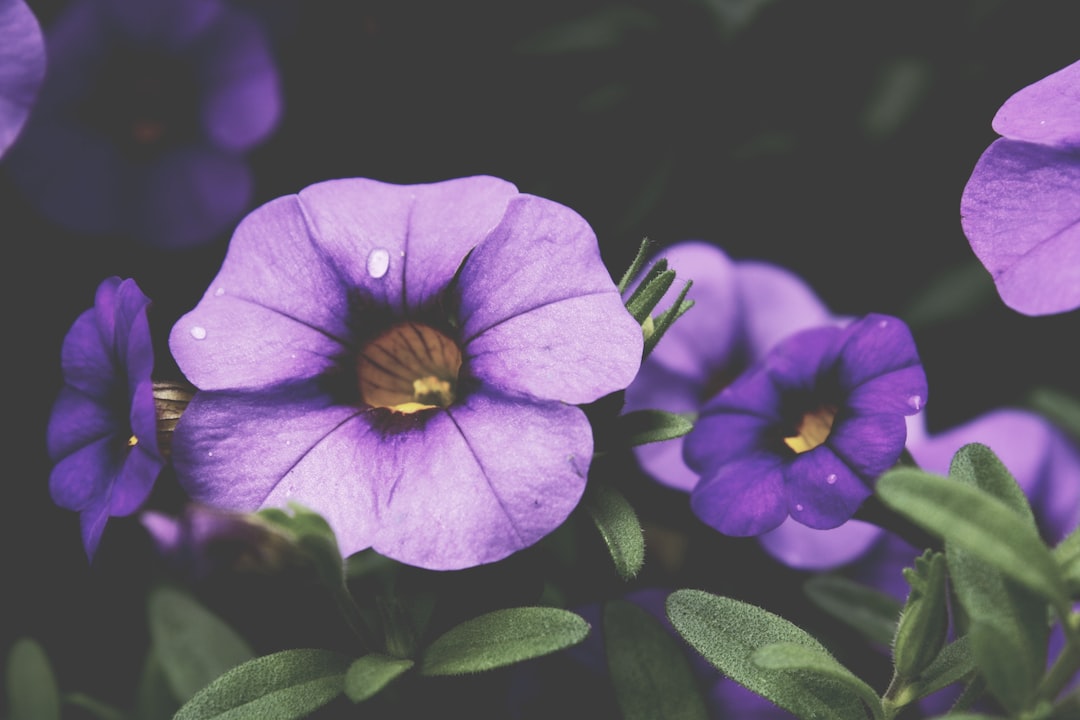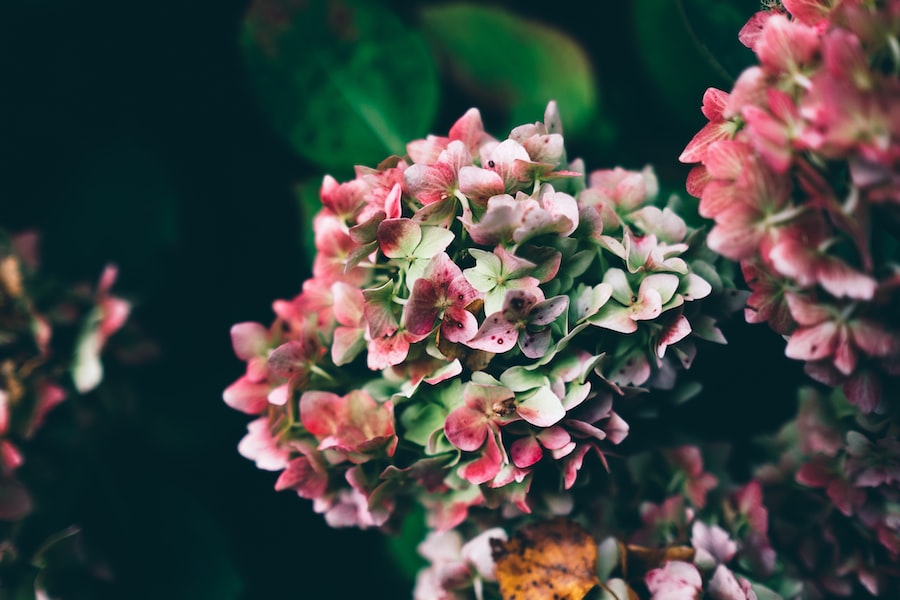Unlocking the Secret to Blooming Poinsettias: A Guide to Getting Your Plant to Flourish

Poinsettias have become synonymous with the holiday season, adorning homes, offices, and public spaces with their vibrant red and green foliage. These beautiful plants have a rich history that dates back centuries. Native to Mexico, poinsettias were first introduced to the United States in the early 19th century by Joel Poinsett, the U.S. ambassador to Mexico. Since then, they have become a staple of holiday decorations and gift-giving.
Proper care is essential for keeping poinsettias healthy and vibrant throughout the holiday season and beyond. Many people mistakenly believe that poinsettias are difficult to care for or that they are only meant to be enjoyed for a short period of time. However, with the right knowledge and attention, poinsettias can thrive and bring beauty to your home for months on end.
Key Takeaways
- Poinsettias need bright, indirect light and well-draining soil to thrive.
- Avoid placing your poinsettia near drafts, heat sources, or cold windows.
- Water your poinsettia when the soil feels dry to the touch, but don’t let it sit in standing water.
- Fertilize your poinsettia every 2-3 weeks with a balanced fertilizer.
- Poinsettias prefer temperatures between 60-70°F and humidity levels around 50%.
Understanding the Basics of Poinsettia Care
Taking care of a poinsettia involves understanding its basic needs and debunking common misconceptions. Poinsettias are tropical plants that require specific conditions to thrive. They prefer bright, indirect light and temperatures between 65 and 75 degrees Fahrenheit during the day, with slightly cooler temperatures at night.
Contrary to popular belief, poinsettias are not poisonous. While it is true that their sap can cause skin irritation in some individuals, they are not toxic if ingested. However, it is still important to keep poinsettias out of reach of children and pets to avoid any potential issues.
Choosing the Right Location for Your Poinsettia
When it comes to choosing the right location for your poinsettia, lighting conditions are crucial. Poinsettias need bright but indirect light to thrive. Placing them near a window that receives filtered sunlight is ideal. Avoid placing them in direct sunlight as this can cause their leaves to burn.
In addition to lighting conditions, it is important to consider the temperature and drafts in the chosen location. Poinsettias are sensitive to extreme temperatures and drafts. They prefer temperatures between 65 and 75 degrees Fahrenheit during the day and slightly cooler temperatures at night. Avoid placing them near heating vents, doors, or windows that may let in cold drafts.
Watering Your Poinsettia: How Much and How Often
| Watering Your Poinsettia: How Much and How Often | |
|---|---|
| Watering Frequency | Once a week |
| Watering Amount | Enough to moisten the soil, but not soak it |
| Soil Type | Well-draining soil |
| Water Temperature | Room temperature |
| Watering Method | Water from the bottom of the pot |
| Signs of Overwatering | Yellowing leaves, wilting, root rot |
| Signs of Underwatering | Drooping leaves, dry soil, brown leaf edges |
Proper watering is essential for the health of your poinsettia. It is important to water your poinsettia thoroughly but not excessively. Allow the soil to dry out slightly between waterings, but do not let it become bone dry.
To water your poinsettia, thoroughly saturate the soil until water drains out of the bottom of the pot. Discard any excess water that collects in the saucer to prevent root rot. It is important to avoid overwatering as this can lead to root rot and other issues.
Underwatering can also be detrimental to poinsettias. Signs of underwatering include wilting leaves, drooping stems, and dry soil. If you notice these signs, water your poinsettia immediately and adjust your watering schedule accordingly.
Fertilizing Your Poinsettia: Tips and Tricks
Fertilizing poinsettias can help promote healthy growth and vibrant foliage. There are various types of fertilizers available for poinsettias, including liquid fertilizers and slow-release granular fertilizers. It is important to choose a fertilizer specifically formulated for poinsettias or for flowering plants in general.
When it comes to frequency and amount of fertilization, it is best to follow the instructions on the fertilizer packaging. In general, poinsettias benefit from regular fertilization every 2-4 weeks during their active growth period, which is typically from spring to early fall.
It is important not to over-fertilize poinsettias as this can lead to excessive foliage growth at the expense of flower production. Additionally, avoid fertilizing poinsettias during their dormant period, which is typically from late fall to early spring.
Temperature and Humidity: Creating the Perfect Environment for Your Poinsettia

Temperature and humidity play a crucial role in the health and well-being of poinsettias. Poinsettias prefer temperatures between 65 and 75 degrees Fahrenheit during the day, with slightly cooler temperatures at night. Avoid exposing them to extreme temperatures, as this can cause leaf drop and other issues.
In terms of humidity, poinsettias prefer moderate to high humidity levels. Dry indoor environments can cause their leaves to wilt and drop prematurely. To increase humidity around your poinsettia, you can place a tray filled with water near the plant or use a humidifier.
Maintaining proper temperature and humidity levels can be challenging, especially during the winter months when indoor heating systems can dry out the air. However, with a little extra care and attention, you can create an environment that is conducive to the health and well-being of your poinsettia.
Pruning Your Poinsettia: Why and How to Do It
Pruning is an important aspect of poinsettia care that helps promote bushier growth and prevent legginess. Pruning also helps maintain the desired shape and size of the plant.
There are several reasons for pruning poinsettias. One reason is to remove any dead or damaged foliage or stems. This helps improve the overall appearance of the plant and prevents the spread of diseases or pests.
Another reason for pruning is to promote bushier growth. Pinching back the tips of new growth encourages branching and results in a fuller, more compact plant.
To prune your poinsettia, use clean, sharp pruning shears or scissors. Cut back the stems to the desired length, making sure to leave at least 3-4 leaves on each stem. Avoid cutting into the woody part of the stem as this can cause damage.
Dealing with Pests and Diseases: Protecting Your Poinsettia
Poinsettias are susceptible to a variety of pests and diseases, including aphids, whiteflies, spider mites, and powdery mildew. It is important to regularly inspect your poinsettia for any signs of infestation or disease and take appropriate action.
Prevention is key when it comes to dealing with pests and diseases. Avoid overwatering your poinsettia as this can create a favorable environment for pests and diseases. Additionally, make sure to provide proper air circulation around the plant to prevent the buildup of moisture.
If you notice any signs of pests or diseases, such as yellowing leaves, distorted growth, or powdery white spots, take immediate action. There are various organic and chemical treatments available for controlling pests and diseases on poinsettias. Follow the instructions on the product packaging and treat your poinsettia accordingly.
Propagating Poinsettias: Growing New Plants from Cuttings
If you want to expand your collection of poinsettias or share them with friends and family, propagating poinsettias from cuttings is a great option. Propagation involves taking a cutting from an existing poinsettia plant and encouraging it to develop roots and grow into a new plant.
To propagate poinsettias, take a 4-6 inch cutting from the tip of a healthy stem. Remove any leaves from the lower half of the cutting and dip the cut end in rooting hormone powder. Plant the cutting in a well-draining potting mix and keep it in a warm, humid environment.
It is important to keep the soil moist but not overly wet during the rooting process. After a few weeks, the cutting should develop roots and can be transplanted into a larger pot. With proper care, the new plant will grow into a healthy poinsettia.
Decorating with Poinsettias: Creative Ideas for Holiday Displays
Poinsettias are not only beautiful on their own, but they can also be incorporated into creative holiday displays. There are numerous ways to showcase poinsettias in your home or office during the holiday season.
One idea is to create a poinsettia centerpiece for your dining table. Place a large potted poinsettia in the center of the table and surround it with smaller potted poinsettias or other holiday decorations. This creates a festive and eye-catching display that is sure to impress your guests.
Another idea is to use poinsettias to decorate your fireplace mantel. Place potted poinsettias on either end of the mantel and add other holiday decorations such as candles, garlands, and ornaments. This creates a warm and inviting focal point in your living room.
If you’re feeling crafty, you can also create DIY poinsettia crafts and projects. For example, you can make a wreath using poinsettia flowers and foliage, or you can create poinsettia-themed ornaments to hang on your Christmas tree. The possibilities are endless when it comes to incorporating poinsettias into your holiday decor.
Storing Your Poinsettia: Keeping it Healthy for the Next Blooming Season
After the holiday season, many people wonder what to do with their poinsettias. With proper care, you can keep your poinsettia healthy and encourage it to bloom again next year.
To store your poinsettia after the holiday season, gradually reduce watering and allow the plant to enter its dormant period. Place it in a cool, dark location such as a basement or garage. During this time, water the plant sparingly to prevent the soil from completely drying out.
In early spring, when new growth begins to emerge, you can start watering your poinsettia more regularly and move it to a brighter location. With proper care, your poinsettia should start to grow and bloom again in time for the next holiday season.
Poinsettias are not just a fleeting symbol of the holiday season; they can be enjoyed year-round with the right care and attention. By understanding the basics of poinsettia care, choosing the right location, watering and fertilizing properly, maintaining proper temperature and humidity levels, pruning when necessary, preventing and treating pests and diseases, propagating new plants, and getting creative with holiday displays, you can ensure that your poinsettias thrive and bring beauty to your home for months on end. So go ahead and embrace the beauty of poinsettias beyond the holiday season.



